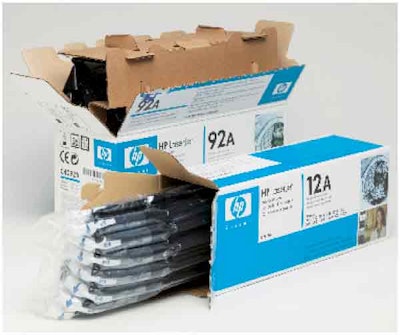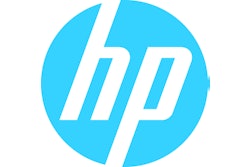Wollam says, “We ask three fundamental questions during the development of a new package. Are we reducing? Are we reusing? Are we recycling? Our ultimate goal is to maximize the total benefit across the three sustainability pillars for all our packaging.”
A member of the team that recently redesigned the North American HP print cartridge packaging, Wollam speaks from experience. The new packaging will reduce material requirements by nearly 15 million pounds this year and offers significant advantages in terms of reuse and recycling.
Sustainable programs aim to lessen the environmental and social impact of a package from raw material extraction to processing, converting, delivery, and disposal. Sustainable packaging does not necessarily mean that renewable materials are always the optimum solution. They may not be for some applications. Sustainable packaging does mean that packaging engineers like Wollam go beyond product protection and marketing to understand the lifecycle implications of the package.
For example, HP reduced overall package weight for LaserJet toner packaging 45% and improved by 30% the number of toner packages per pallet. Fewer truckloads means less CO2 emitted. HP also decreased the number of materials used in these packages. This reduced total extraction, processing, and converting impacts. Wollam says, “If we simply looked at the package as a carrier and billboard for the product, we would never have considered the overall environmental and social context.”
Reusing
HP considered all environmental impacts, including reuse during the ink and toner cartridge packaging redesign. Wollam offers an interesting perspective on the term reuse in the context of sustainability. Reuse means incorporating recycled content when possible. Reuse also means designing packaging so that it can have secondary uses. HP’s new LaserJet toner box (pictured), which is significantly smaller and uses fewer materials than the box it replaces, was also designed to be reused as a container to ship empty toner cartridges back to HP.
The package is self-sealing, another convenience feature. Business users can take up to eight boxes, bind them together as a unit, and send cartridges back to HP. Making returns easy increases the likelihood people will actually follow through. These boxes can also serve as a handy means to mail small items. (HP does not reuse printer cartridges, because remanufactured cartridges do not deliver the same reliability or quality as original cartridges.)
Recycling
“Mixed materials within a single package can have a negative impact on the recycling steam—lowering total usable content,” said Jean Gingras, HP environmental marketing manager, North America Supplies. “We strive to have pure groupings of material—one type of plastic or one form of paperboard. The long term goal is to ensure increasing amounts of high quality post consumer and industrial materials coming back into the system.”
It is one thing to create packages that can be recycled and quite another to induce consumers, businesses, and municipalities to recycle in the first place. To that end, HP has instituted programs to make it both cost effective and manageable to take back its printing products and packaging for recycling.
“We see our total customer experience scores going up in the environmental area as we communicate HP’s commitment to the environment,” Gingras said. “Our customer loyalty scores are rising as well. In this era of choice and competing messages, loyalty creates a powerful impulse for the consumer or business to buy your products. Employees that belong to an organization that strives to reduce and recycle also develop greater loyalty and a desire to achieve. Apart from the environmental and social advantages, sustainability offers a powerful bottom-line incentive as well.”

























